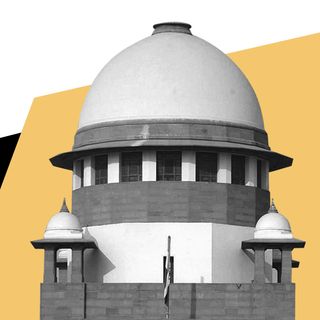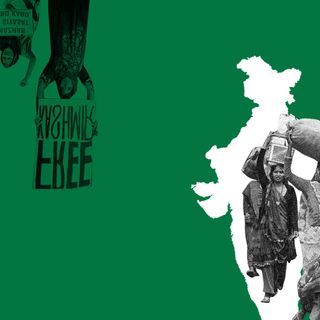
Leaked Report Shows Government Color‑Coded Journalists Based on Political Sympathies
The report also contains a detailed strategy on how to spin media narratives.

The government has devised a comprehensive media toolkit on reining in digital media coverage and “neutralizing” people spreading “false narratives,” according to a report by The Caravan.
It refers to a 97-page document, the existence of which was first broken by the Hindustan Times in December 2020, outlining a roadmap to regulate online media discussed by a group of ministers (GoM) in a series of meetings last year. The Caravan leaked the content and key recommendations made in the report, which are being interpreted to serve the following functions: identifying and restraining government critics, giving a boost to “favorable” journalists and websites relaying the official message, and engaging “positive influencers” like retired bureaucrats and media personnel to “turn the narrative” in the government’s favor.
“The report laid out the need to identify journalists who generate negative narratives, find others who can counter them, and to create events of a spectacular nature that would influence public perception in its favour,” The Caravan reported.
Titled “The Group of Ministers on Government Communication,” the documents list a volley of tasks ministers can undertake to curb the influence of “international media.”
The GoM comprises five cabinet ministers: Ravi Shankar Prasad, Smriti Irani, Prakash Javadekar, S. Jaishankar, Mukhtar Abbas Naqvi; and four ministers of state: Kiren Rijiju, Hardeep Singh Puri, Anurag Thakur, and Babul Supriyo. The six meetings were held in June and July, with the final one on December 3 that concluded with an “action plan.” The recommendations are the result of consultations with “prominent persons from the media field,” “members of industry/business chambers,” and other “prominent personalities,” The Caravan reported.
Related on The Swaddle:
New Govt Rules Require Tech Companies to Reveal Users Who Post ‘Unlawful, Inflammatory’ Content
The report makes mention of notable journalists who have allegedly participated in these meetings — individually chaired by Irani, Rijiju, and Javadekar on separate occasions — and offered their recommendations. Names such as The Hindu’s Nistula Hebbar, The Indian Express’s Ravish Tiwari, Hindustan Times’s executive editor Shishir Gupta all feature on the participation list, which goes on to mention at least 25 journalists.
According to The Caravan, the GoM report says these journalists observed that “around 75% of media persons are impressed by the leadership of Shri Narendra Modi and are ideologically with the party,” and that “[the GoM] should form different groups of these persons and communicate with them on a regular basis.” Most journalists named have denied any role in the GoM and said no notes were taken, with only Jayant Ghoshal going on record. “I do not know how they came up with these observations,” he told The Caravan.
One governmental concern that has emerged from the report is that of image management: The Caravan takes note of the “paranoia” around digital coverage to precipitate such a media policy. The June meetings took place against the backdrop of a raging pandemic, growing unemployment, and worrying economic trends. To counter the “negative image,” the report outlined “10 narratives” that allied media could push to recalibrate the optics. This could be done by “… engaging with media houses and academia at national and international level, utilizing all types of media, feeding them with positive stories and testimonials, developing institutional mechanisms for structured engagements, developing DD International on lines of best international public broadcasters and strengthening a resource pool of domain experts,” the report notes.
The report establishes its objective to contain “false narrative” and “fake news.” “We should have a strategy to neutralise the people who are writing against the Government without facts and set false narratives/spread fake news,” Union Minister Mukhtar Abbas Naqvi reportedly said at the meeting. However, The Caravan noted that “the report does not spell out what a fake narrative is and how the government chooses to define it.” Names of online portals like The Wire and Scroll.in came to the fore, with ministers noting that the new sites’ coverage portrays the ruling government in a negative light. Noting that “online media generates much heat,” said Kanchan Gupta, a fellow at think-tank Observer Research Foundation. “We should know how to influence the online media or we should have our own On-online portal with global content.”
However, the means to achieve this end involve giving institutional support to pro-government platforms like OpIndia. The I&B Ministry, in particular, has been given the task of promoting “supportive online portals like OpIndia” because the government is of the opinion that “most of the existing online portals are critical of [the] Government.” One of the key sections of the report was proposed by Nitin Gokhale, formerly with NDTV and Tehelka, and believed to be close to national security advisor Ajit Doval. “Green – fence-sitters; Black – against; and White – who support,” Gokhale said, pushing an idea to color-code friendly and hostile journalists. “We should support and promote favourable journalists,” he noted.
The media outreach will also involve tracking “50 negative influencers” who regularly “discredit” the government. Parallel to this, the I&B ministry is asked to “encourage” at least 50 positive influencers who will be provided with “requisite information” to posit the government’s work in favorable light. Critics have pointed that these are masked efforts to censor journalists critical of its stance and spin facts into a favorable narrative. The report cites Swapan Dasgupta, former media personnel and now a Rajya Sabha member, as proposing that “the power of persuasion should be used behind the scenes.”
The Wire noted that the recently introduced Information Technology (Intermediary Guidelines and Digital Media Ethics Code) Rules, 2021, appear to be “a culmination of these deliberations.” Criticism around the draft IT rules notes the threat to free speech, access to information, and individual rights by regulating content on social media, digital news, and OTT platforms.
The Caravan concluded that “though its mandate was couched in cautious terms, the GoM’s report clearly sought to improve the image of the government in the media, and there is no ambiguity in how it proposed to go about it.”
Saumya Kalia is an Associate Editor at The Swaddle. Her journalism and writing explore issues of social justice, digital sub-cultures, media ecosystem, literature, and memory as they cut across socio-cultural periods. You can reach her at @Saumya_Kalia.
Related


India Slips From ‘Free’ To ‘Partly Free’ in Global Freedom Report
